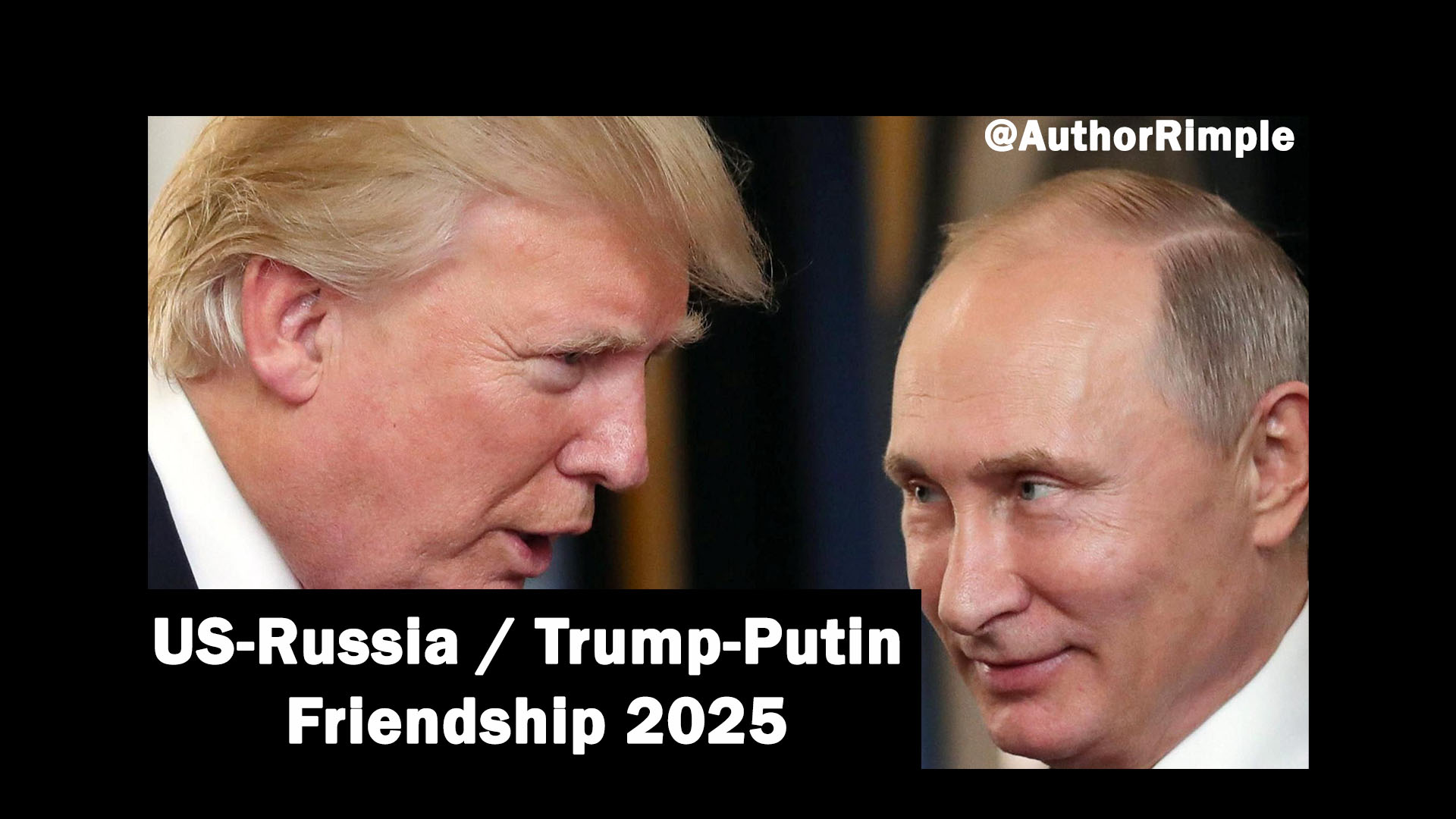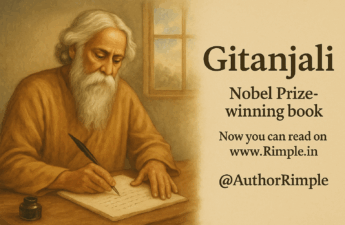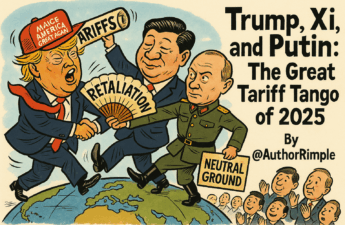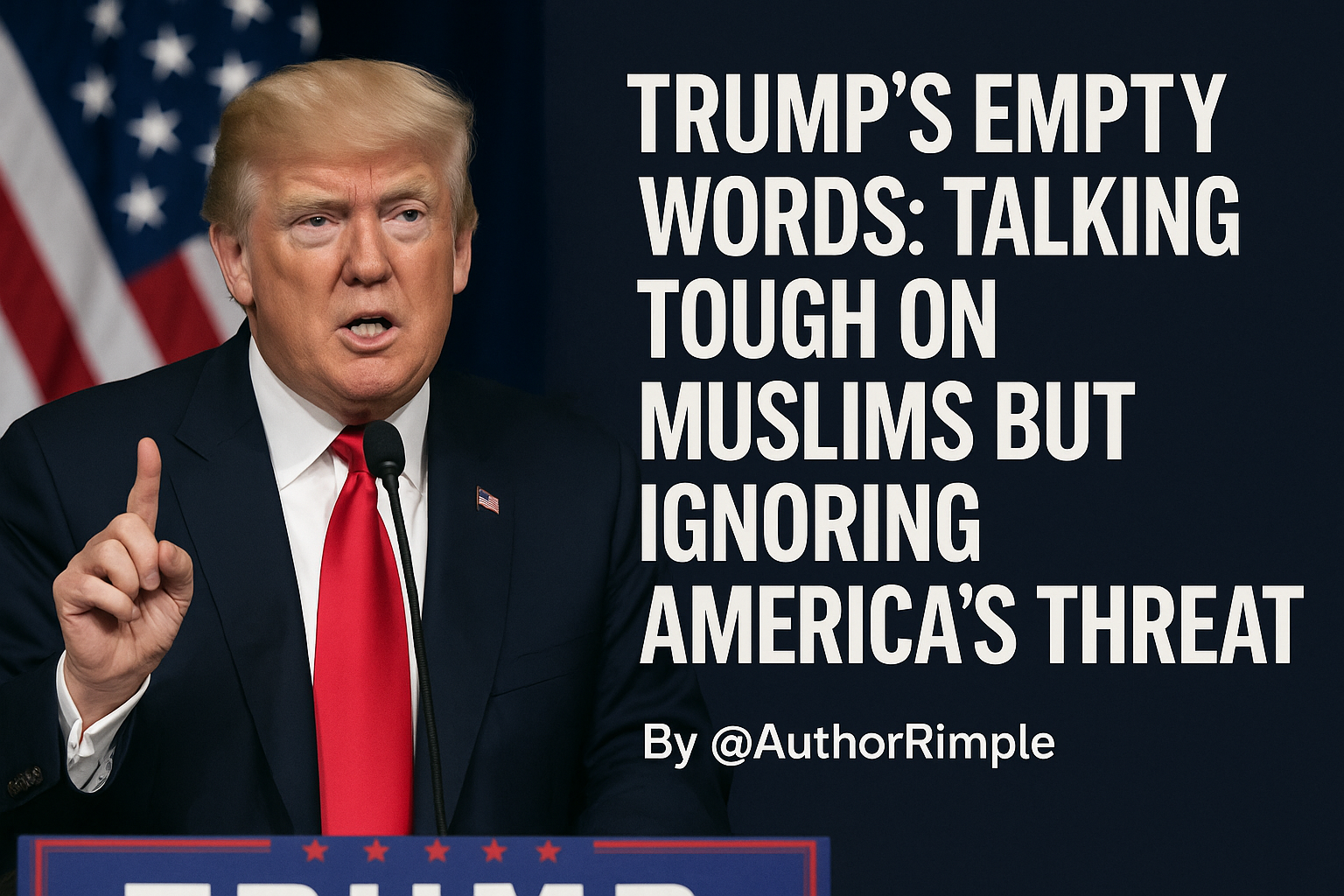I have been wanting to write on this for more than a month now. Finally, it is published on blog.
The relationship between the United States and Russia has been tense for decades, marked by rivalry, distrust, and conflicts like the Cold War and recent disputes over Ukraine. However, in 2025, under U.S. President Donald Trump, there’s been a noticeable shift toward friendlier ties with Russian President Vladimir Putin. This “newly brewing friendship” is surprising given the rocky history between the two nations. Below is a simple, detailed, and chronological explanation of how this relationship is developing, with key actions and activities, written for everyday readers.
Background: A History of Tension
The U.S. and Russia have rarely been close. Here’s a quick look at their past:
- Cold War (1947–1991): The U.S. and Soviet Union (which included Russia) competed for global power, building nuclear weapons and fighting indirectly in wars like Vietnam and Afghanistan.
- Post-Cold War (1990s–2000s): After the Soviet Union collapsed, relations improved briefly, but tensions grew as Russia felt humiliated by NATO’s expansion eastward.
- 2010s–2020s: Russia’s 2014 annexation of Crimea, interference in U.S. elections (2016), and the 2022 invasion of Ukraine led to U.S. sanctions, military aid to Ukraine, and efforts to isolate Russia globally.
- Trump’s First Term (2017–2021): Trump often praised Putin, calling him “strong” and saying they got along well. Despite this, his administration imposed sanctions on Russia and sent weapons to Ukraine, showing a mixed approach.
This history makes the recent warming of ties in 2025 stand out. Let’s dive into the timeline of events.
January 2025: Trump’s Second Term Begins with a Russia Focus
When Trump returned to the White House on January 20, 2025, he immediately signaled a desire to improve U.S.-Russia relations. His “America First” policy emphasized deals that benefit the U.S., and he saw Russia as a potential partner.
- January 20, 2025 – Trump’s Inauguration Comments:
- During his inauguration speech, Trump criticized the ongoing Russia-Ukraine war, saying it was “destroying” Russia and that Putin “can’t be thrilled.” He suggested Russia was losing too many soldiers and hinted at new sanctions or tariffs if Russia didn’t end the war.
- This showed Trump wanted to pressure Russia but also open the door for talks, unlike the previous Biden administration, which avoided direct contact with Putin.
- January 25, 2025 – Trump’s Team Signals a Shift:
- Trump’s advisors, including Secretary of State Marco Rubio, began discussing a “transactional” approach to Russia. This meant focusing on U.S. economic and security gains, like energy deals, rather than isolating Russia.
- Trump promised to keep existing sanctions on Russia for now, signaling he wasn’t fully abandoning Ukraine but was open to negotiations with Moscow.
February 2025: Direct Talks and a Warming Tone
February marked a turning point, with Trump and Putin starting direct communication. Their phone calls and meetings shocked many, given the U.S.’s previous efforts to isolate Russia over Ukraine.
- February 12, 2025 – First Major Trump-Putin Phone Call:
- Trump and Putin spoke for over two hours, one of the longest U.S.-Russia leader calls in years.
- Topics included:
- Ukraine War: They discussed a possible ceasefire, focusing on halting strikes on energy infrastructure. Trump pushed for peace, saying the war “should never have started.”
- Bilateral Relations: Both leaders agreed that better U.S.-Russia ties could lead to “enormous economic deals” and “geopolitical stability.”
- Other Issues: They touched on Middle East peace, global security, and even hockey games, showing a friendly tone. Putin used the call to shift focus from Ukraine to broader global cooperation.
- The White House called the call “highly productive,” and Trump posted on Truth Social, praising Putin’s “time and effort.”
- Russian media celebrated the call as a step toward “normalization” of ties, with Kremlin spokesperson Dmitry Peskov saying Trump and Putin “trust each other.”
- February 13, 2025 – Marc Fogel’s Release:
- Russia released Marc Fogel, a U.S. citizen detained on drug charges, as a goodwill gesture.
- Trump thanked Putin publicly, calling it a “success” and reinforcing their personal rapport. Analysts said Putin timed the release to flatter Trump and encourage more talks.
- February 19, 2025 – U.S.-Russia Talks in Saudi Arabia:
- U.S. and Russian officials met in Riyadh, Saudi Arabia, for high-level talks, the first in-person contact since Russia’s 2022 Ukraine invasion.
- Ukraine was not invited, which alarmed Kyiv and European allies. The talks focused on:
- Ending the Ukraine war, with discussions about a 30-day ceasefire.
- Reducing “irritants” like U.S. sanctions on Russia.
- Future energy cooperation and U.S. investment in Russia.
- Russian newspapers highlighted the meeting, showing photos of officials at the table and calling it a sign of Russia’s return to global influence.
- February 22, 2025 – Trump’s Public Shift Toward Russia:
- Trump began echoing Kremlin talking points, falsely claiming Ukraine “started” the war and calling Ukrainian President Volodymyr Zelenskyy a “dictator.”
- He suspended U.S. military aid and intelligence sharing with Ukraine, a major policy shift that aligned with Russia’s interests.
- These moves divided Americans. Supporters cheered Trump’s focus on U.S. interests, while critics, like voter Carla Bayles, called it an “outrageous” betrayal of Ukraine.
March 2025: Tensions with Ukraine and Closer Ties with Russia
In March, Trump’s actions further strained U.S.-Ukraine relations while deepening engagement with Russia. His meetings with Putin and criticism of Zelenskyy made headlines.
- March 4, 2025 – Oval Office Clash with Zelenskyy:
- Trump hosted Zelenskyy in the White House, but the meeting turned heated. Trump called Zelenskyy a “dictator” and blamed Ukraine for the war, saying it was “easier” to work with Russia.
- Trump referenced the 2016 Russia investigation, saying he and Putin went through a “phony witch hunt” together, which strengthened their bond.
- Zelenskyy left without signing a proposed minerals deal that Trump said could end the war. Trump later banned Zelenskyy from returning until he was “ready for peace.”
- Russian officials, like Dmitry Peskov, praised Trump’s foreign policy shift, saying it matched Russia’s vision.
- March 9, 2025 – U.S. Sides with Russia at the UN:
- In a shocking move, the U.S. voted with Russia, Belarus, and North Korea against a UN resolution condemning Russia’s invasion of Ukraine. This broke decades of U.S. alignment with Europe against Russian aggression.
- Trump’s administration was reportedly planning to lift some sanctions on Russia, signaling a broader effort to restore diplomatic and economic ties.
- March 14, 2025 – Second Trump-Putin Call and Kursk Controversy:
- Trump and Putin spoke again, with Trump appealing to Putin to spare Ukrainian soldiers he claimed were “surrounded” in Russia’s Kursk region.
- Trump repeated Putin’s false claim of an encirclement, posting on Truth Social that it could be a “horrible massacre.” Ukraine and independent analysts denied any encirclement, calling it Russian propaganda.
- Putin praised Trump for “doing everything” to improve U.S.-Russia relations, telling his security council that Trump’s policies were undoing damage from the Biden era.
- Trump’s envoy, Steve Witkoff, met Putin in Moscow to discuss a 30-day ceasefire, but Putin rejected it, demanding Ukraine stop rearming. Kyiv had accepted the proposal.
- March 18, 2025 – Third Trump-Putin Call:
- Trump and Putin spoke for at least 90 minutes, agreeing to an “immediate ceasefire” on Ukraine’s energy and infrastructure attacks.
- They discussed:
- A full ceasefire and permanent peace, including Black Sea maritime negotiations.
- The economic and geopolitical “upside” of better U.S.-Russia ties.
- Trump posted on Truth Social, calling the call “very good and productive” and saying both leaders wanted the war to end. However, hours later, Russian attacks hit Kyiv, showing no immediate ceasefire.
- The Kremlin said halting U.S. aid to Ukraine was key to peace, a condition not mentioned in the White House readout.
April 2025: Tariffs and Continued Talks
In April, Trump’s tariff policies and ongoing talks with Russia showed his balancing act: pressuring Russia indirectly while pursuing friendship.
- April 2, 2025 – Trump Announces Tariffs but Spares Russia:
- Trump declared “reciprocal tariffs” on countries with high tariffs on U.S. goods. India faced a 26% tariff, and China got a 54% tariff (later escalating to 125%).
- Russia faced no new primary tariffs, as U.S.-Russia trade was already near zero due to sanctions. However, Trump threatened 25%–50% secondary tariffs on countries buying Russian oil, aiming to pressure Russia indirectly.
- This showed Trump’s willingness to work with Russia diplomatically rather than hitting it with direct economic penalties.
- April 4, 2025 – Trump’s Mixed Signals:
- Trump expressed frustration with Putin for proposing “external governance” for Ukraine under the UN, saying he was “disappointed” and “angry.” He argued Putin should negotiate with Zelenskyy.
- Despite this, Trump avoided direct criticism of Russia’s invasion and kept pushing for peace talks. Rumors swirled about another Trump-Putin call, but the Kremlin denied plans.
- Reports emerged that U.S. companies planned to attend the St. Petersburg Economic Forum, signaling economic engagement with Russia.
- April 25, 2025 – Steve Witkoff’s Moscow Visit:
- Trump’s special envoy, Steve Witkoff, met Putin in the Kremlin, described as a “warm and welcoming” meeting.
- The visit focused on advancing ceasefire talks and improving U.S.-Russia relations. It reinforced the growing diplomatic channel between Trump and Putin.
May 2025: A Short-Lived Truce
By early May, Trump and Putin achieved a small but symbolic step toward peace, though challenges remained.
- May 3, 2025 – Putin Announces a Three-Day Truce:
- Putin declared a three-day ceasefire in Ukraine, which Trump hailed as a “big step” from a time when U.S. leaders didn’t talk to Putin at all.
- Trump said, “It may not sound like much, but it’s a lot when you think about where we started.” The truce was limited and didn’t stop all fighting, but it showed progress in their talks.
- Russian media framed the truce as proof of Putin’s influence and Trump’s willingness to cooperate.
- May 6, 2025 – Ongoing Negotiations:
- As of May 6, Trump and Putin continued discussions, with U.S. officials hinting at a possible face-to-face meeting. Putin invited Trump to Moscow, which would be the first U.S. presidential visit since 2009.
- No meeting was confirmed, but the invitation showed Russia’s eagerness to strengthen ties.
Why This Friendship Matters
The growing Trump-Putin relationship is a major shift from decades of U.S. policy. Here’s what it means:
- For the U.S.:
- Pros: Trump sees economic benefits, like energy deals, and a chance to reduce global tensions. He believes better ties with Russia could stabilize markets and counter China.
- Cons: Critics, like Senator Bernie Sanders, warn Trump’s coziness with Putin weakens NATO and betrays Ukraine. It could alienate European allies and embolden authoritarian leaders.
- For Russia:
- Putin gains legitimacy after years of isolation. His talks with Trump put Russia back at the “top table” of global politics without major concessions.
- However, Putin’s rejection of full ceasefires (like the 30-day proposal) shows he’s cautious, testing Trump’s limits.
- For Ukraine and Europe:
- Ukraine feels abandoned, as Trump pressures Zelenskyy while negotiating with Russia. Europe worries about weakened security if U.S. support for NATO fades.
- European leaders, like Ursula von der Leyen, have had little contact with Trump, highlighting strained transatlantic ties.
Looking Ahead
The Trump-Putin friendship is still developing, driven by frequent calls, personal rapport, and a shared interest in deals. However, challenges remain:
- Trust Issues: Putin’s history as a former KGB agent makes some, like John Bolton, warn he’s manipulating Trump.
- Ukraine’s Fate: Any peace deal could force Ukraine to cede territory, which Trump’s critics say would embolden Putin and even China’s Xi Jinping.
- U.S. Divisions: Americans are split, with some supporting Trump’s deal-making and others fearing it risks national security.
As of May 6, 2025, Trump and Putin are talking more than ever, with plans for more meetings and economic cooperation. Whether this leads to lasting peace or new conflicts is unclear, but it’s a historic shift that’s reshaping global alliances.
Also Read:





